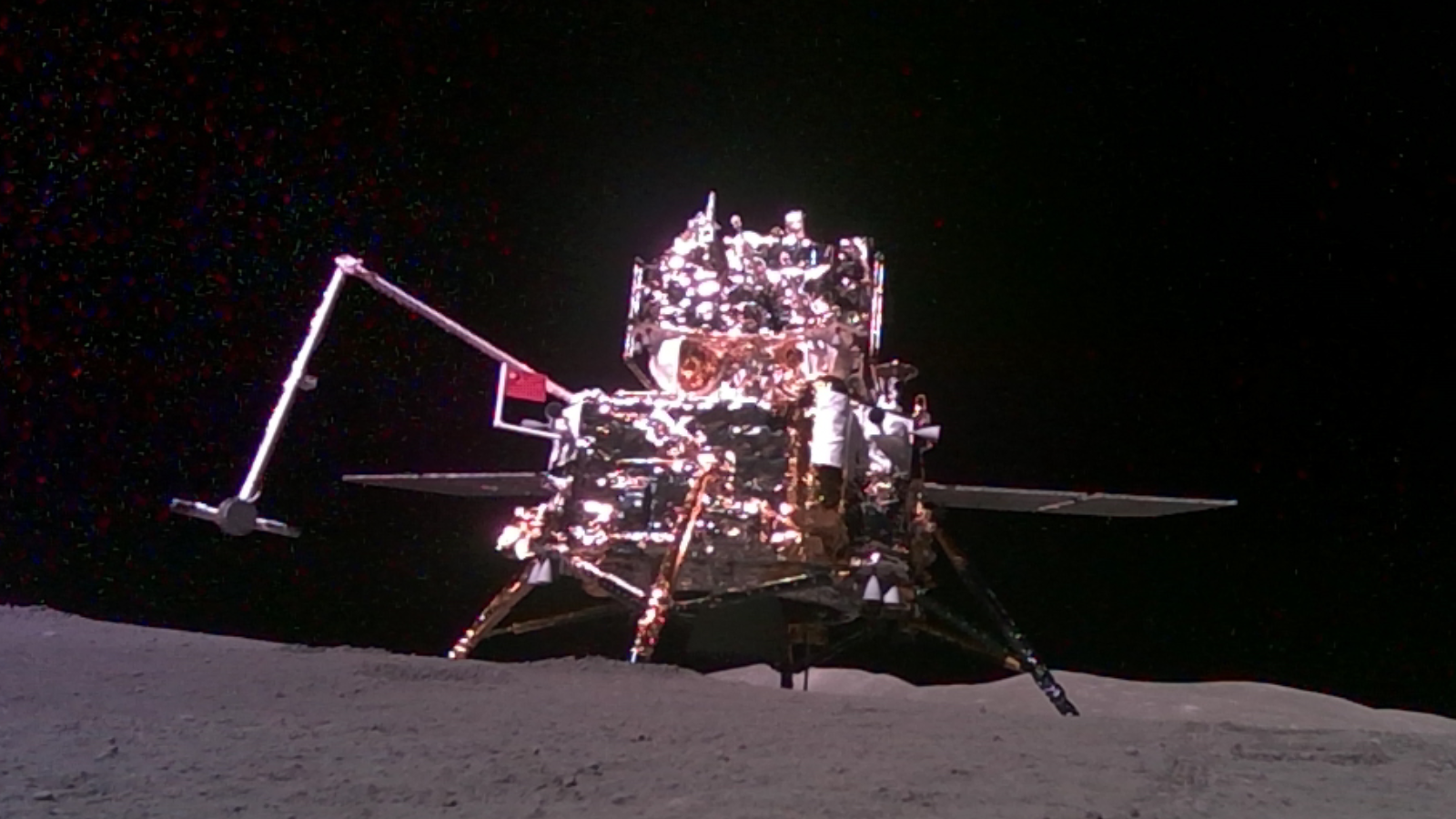Oldest spiral galaxy in the universe captured in fuzzy photo
It formed around 12.4 billion years ago.

Astronomers have identified the oldest known spiral galaxy in the universe, which was formed around 12.4 billion years ago, after rediscovering a fuzzy, forgotten photo taken by the Atacama Large Millimeter/submillimeter Array (ALMA).
The new galaxy, named BRI 1335-0417, measures 15,000 light-years across, making it a third as big as our spiral-shaped home galaxy, the Milky Way. The galaxy formed around 1.4 billion years after the Big Bang, making it the earliest example of a spiral galaxy. It beats the previous oldest spiral, detected in 2019, by around 1.1 billion years. The oldest known galaxy in existence remains GN-z11, which formed around 400 million years after the Big Bang, as previously reported by Live Science's sister site Space.com.
Researchers discovered the ancient galaxy after finding a photo of it in the ALMA archive. To the untrained eye the image may look blurry, but it actually contains a surprising amount of detail for such a distant galaxy.
Related: 11 fascinating facts about our Milky Way galaxy
"I was excited because I had never seen such clear evidence of a rotating disk, spiral structure and centralized mass structure in a distant galaxy in any previous literature," lead author Takafumi Tsukui, a graduate student at The Graduate University for Advanced Studies, SOKENDAI in Japan, said in a statement. "The quality of the ALMA data was so good that I was able to see so much detail that I thought it was a nearby galaxy."
The fuzziness of the image is actually a result of it being captured using radio emissions from carbon ions — carbon atoms stripped of some electrons — in the galaxy, instead of visible light, which is hard to accurately detect from such a distant galaxy, according to the researchers. As a result, there may be more of the galaxy that we can’t see.
"As BRI 1335-0417 is a very distant object, we might not be able to see the true edge of the galaxy in this observation," Tsukui said in the statement. "For a galaxy that existed in the early universe, BRI 1335-0417 was a giant."
Get the Space.com Newsletter
Breaking space news, the latest updates on rocket launches, skywatching events and more!
It is also incredibly dense. The researchers believe that it holds the same amount of mass as the Milky Way, despite being much smaller, and that its spiral arms were likely hotspots for star formation. The galaxy could be so dense because it formed from a violent collision between two smaller galaxies, according to the researchers.
The eventual fate of BRI 1335-0417 could also provide some exciting clues to what eventually happens to spiral galaxies. Astronomers believed that spirals are precursors to elliptical galaxies, but exactly how this transformation occurs is still a mystery, according to the researchers.
Spiral galaxies make up around 72% of the observable galaxies in the universe, according to a 2010 Hubble Space Telescope survey. Understanding more about them and how they form and evolve can help us learn more about our own galaxy, according to the researchers.
"Our solar system is located in one of the spiral arms of the Milky Way," senior author Satoru Iguchi, an astronomer at SOKENDAI and the National Astronomical Observatory of Japan, said in the statement. "Tracing the roots of spiral structure will provide us with clues to the environment in which the solar system was born. I hope that this research will further advance our understanding of the formation history of galaxies."
The study was published online May 20 in the journal Science.
Originally published on Live Science.
Join our Space Forums to keep talking space on the latest missions, night sky and more! And if you have a news tip, correction or comment, let us know at: community@space.com.

Harry is a U.K.-based staff writer at Live Science. He studied Marine Biology at the University of Exeter (Penryn campus) and after graduating started his own blog site "Marine Madness," which he continues to run with other ocean enthusiasts. He is also interested in evolution, climate change, robots, space exploration, environmental conservation and anything that's been fossilized. When not at work he can be found watching sci-fi films, playing old Pokemon games or running (probably slower than he'd like).










